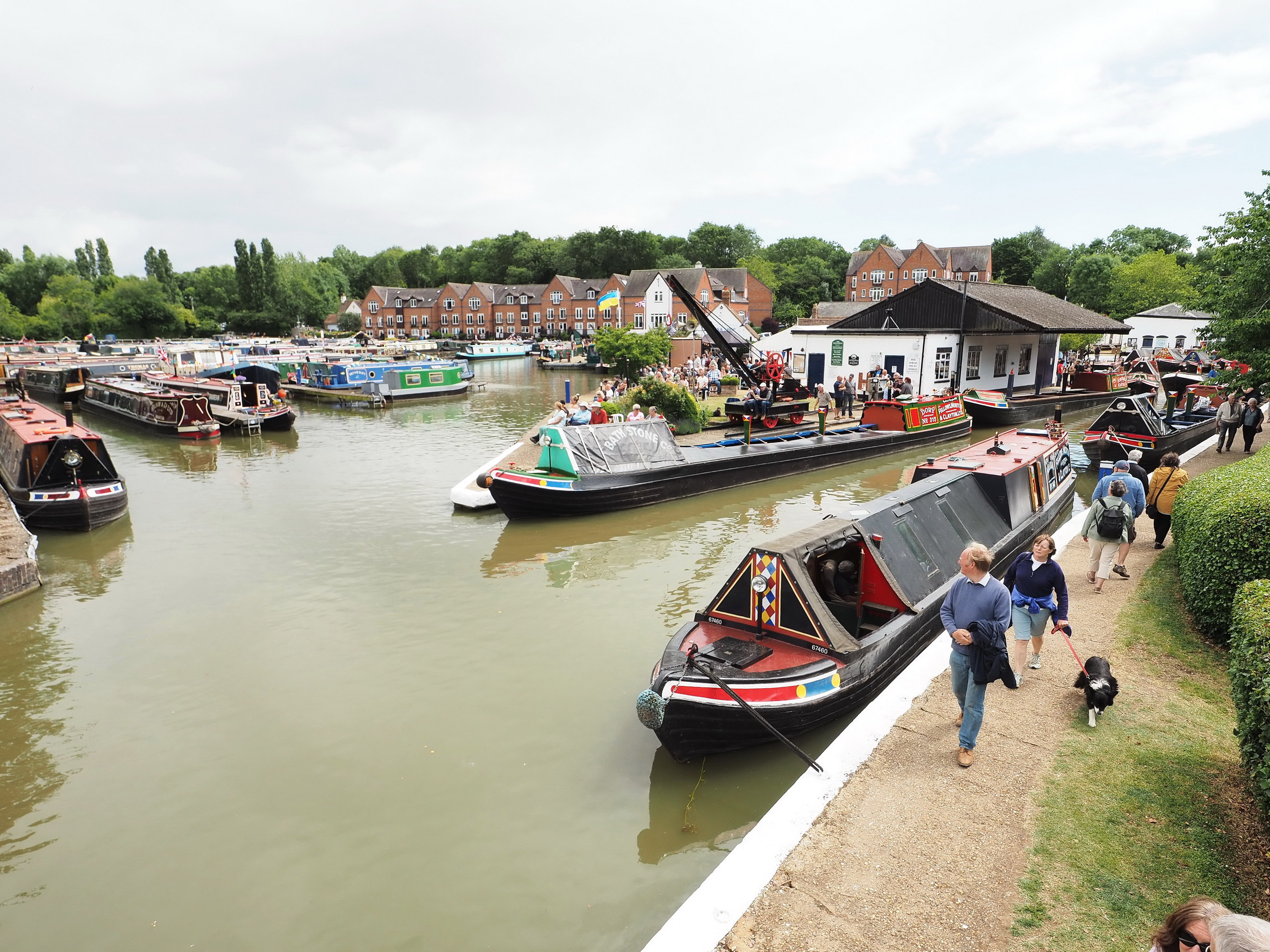I have to admit, the historic boat scene is rather alien to me. While I’m in awe of the many heritage craft I’ve seen on my travels, and the people who maintain and care for them, I don’t have anything like the level of detailed knowledge about these vessels as other waterways enthusiasts.
In order to further my understanding, I attended one of the biggest events in the heritage boating calendar: the Braunston Historic Boat Rally, held this year over the weekend of 25th-26th June. With 80-plus craft exhibited by some of the most passionate and knowledgeable enthusiasts you’ll ever meet, it provided a superb insight into this rich and colourful aspect of waterways culture.
Sadly, I am only able to cover a small fraction of the craft and characters I met at the rally. But, for one reason or another, the following four boats really stood out, with each having a fascinating story to tell.
Narrowboat Dory
| Date | 1934 |
| Length | 70ft |
| Builder | W J Yarwood & Sons Ltd, Northwich |
| Engine: | 15hp Bolinder BM |
| Owner: | Dave & Penny Ross |
One name that kept coming up during my time at the Braunston event was Dave Ross. He had been suggested as a potential interviewee by Keith and Andy on steam tug Hasty, who had procured his services during the build of their boat. Apparently, Dave’s historic narrowboat Dory was a sight to behold, and they weren’t wrong. Moored, pride of place inside the marina, the boat looked so good in her freshly painted Fellows, Morton & Clayton livery that she might have just been launched from a boat-builder’s yard.
.jpeg)
I found Dave inside Dory’s engine room, tinkering with the impressively well- maintained Bolinder engine that chugged away slowly and majestically. Apparently, he had bought the boat just before the Covid lockdowns kicked in and, despite being in pretty good condition already, he decided to spend his spare time making it look even better.
“Dory was undoubtedly one of the stars of this year’s show”
Dory was built for FMC, the biggest and best- known carrying fleet on the canals, and would have transported all manner of cargoes. But, around 1950 or 1951, a shortage of unpowered butties saw it being converted, which entailed the removal of its engine and counter. It continued to be used for carrying on the canals of the North, albeit now being towed by a motorised boat. When Dory’s commercial carrying days were over it was employed on the Stratford as a mud boat, carrying clay and silt during the canal’s restoration, before being left destitute once the project was complete.
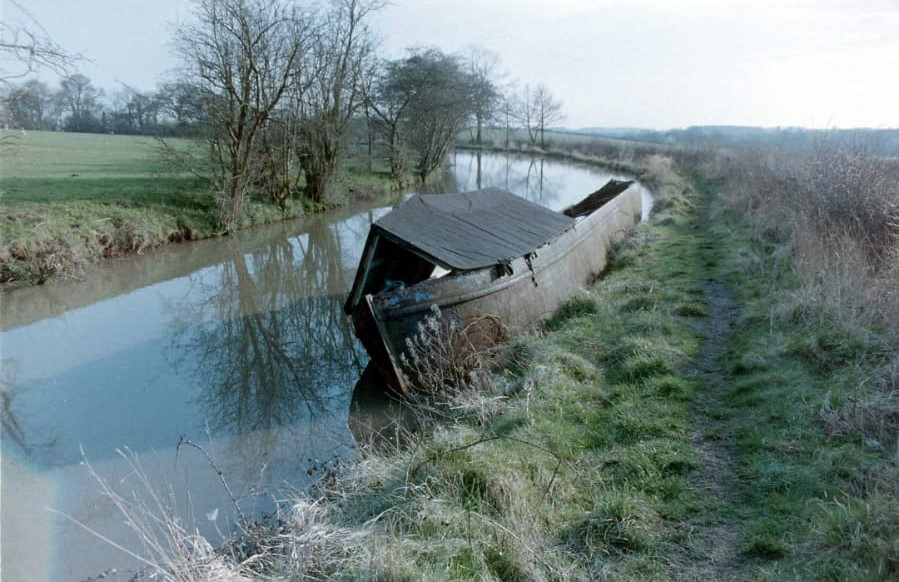
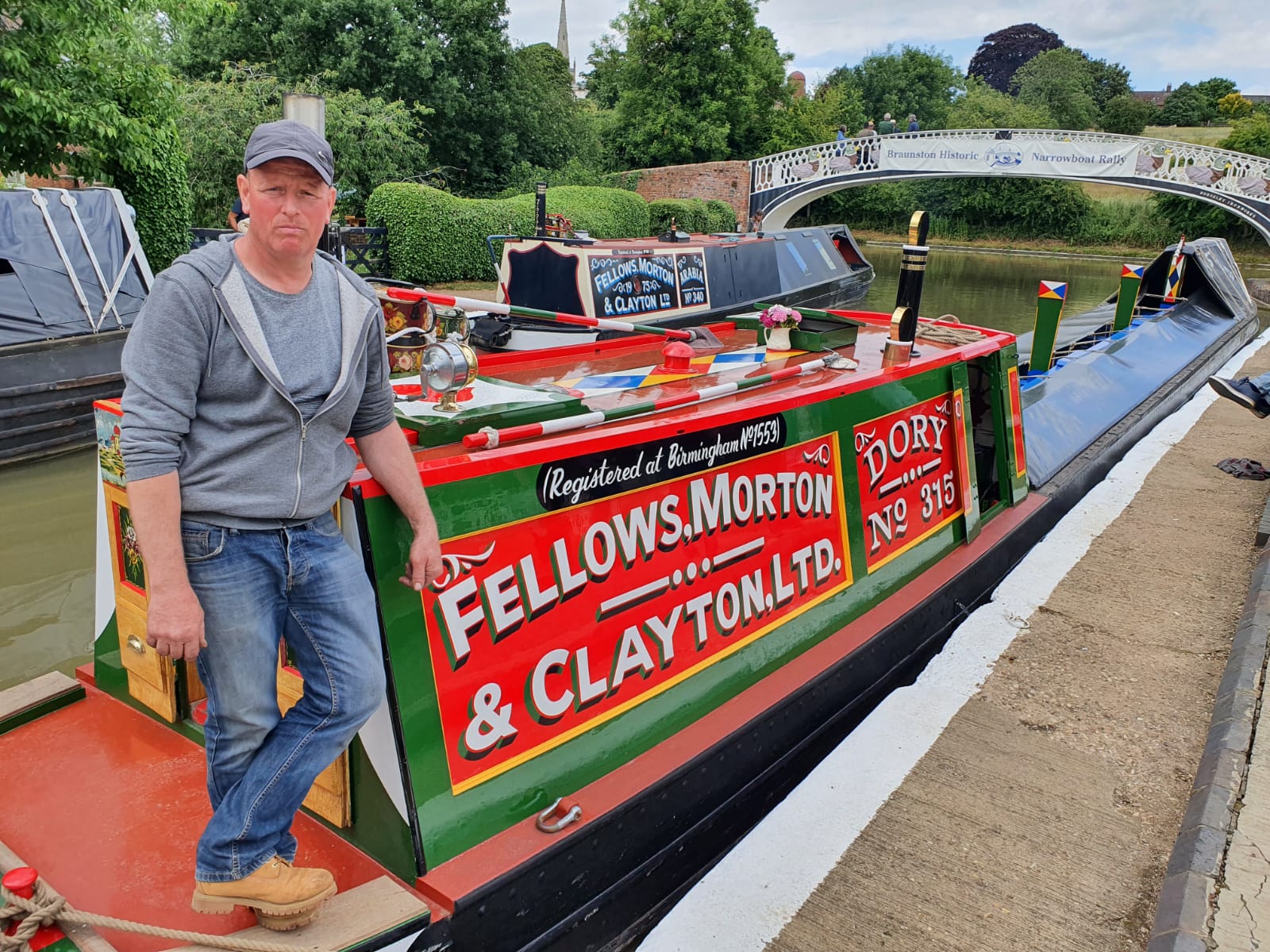
It lay forgotten until 1990 when Andrew Boucher and Ian Kemp refloated her and towed her to Ellesmere Port for restoration. There they replaced the counter and cabin, and fitted it with an Armstrong Siddeley two- cylinder diesel engine. It was then sold and owned by several different enthusiasts, with one of the most recent installing a 15hp Bolinder hot bulb semi-diesel.
Fast-forward to 2020 and Dory was purchased by Dave and his wife Penny. They set about replacing some of its woodwork, moving its engine to the correct position, and installing a new deck board, cratch and ropework, before having it splendidly repainted and signwritten. Dave and Penny should be enormously proud of what they have achieved – Dory was undoubtedly one of the stars of this year’s show.
Narrowboat Sandbach
Sandbach’s owner, Alison Smedley, is a bit of a national treasure, although she’s far too modest to admit it. She’s worked for and volunteered with the Inland Waterways Association for over 18 years and was awarded an MBE in the 2010 New Year Honours list for her services to the inland waterways. I only found this out after being alerted to the fact by a member of her crew. “I rarely use my letters, but I have been known to put MBE after my name when writing to someone important on behalf of the IWA,” she revealed. “It’s sometimes useful to have an MBE, I guess.”

Her boat was built for the London, Midland & Scottish Railway in 1946, and it was just 25ft long before being lengthened to 35ft less than a year later. It originally had a wheelhouse and was used by LMS to do various work on the canals, most likely rebuilding embankments on the Shropshire Union Canal, before being employed on the River Weaver as a tug. When the canals were nationalised, Sandbach became part of the British Waterways Board’s maintenance fleet and was operated on the River Weaver during the early 1970s. She was later found sunk on the Weaver when BWB stopped using her.
.jpeg)
Sandbach was rescued in the 1980s by Malcom Braine and fitted out for a private customer. Its wheelhouse and wheel were removed, the cabin was fitted and the current diesel engine, its third, was installed too.
It’s been owned privately by at least four other people before Alison bought it in 2015. “I wanted a historic boat that was easy to take out single handed,” she explained. “I get to use it quite often when I’m needed in person at the IWA offices [in Buckinghamshire]. Although I live quite a way from there, Sandbach is moored nearby.”
Steam tug Hasty
| Date | 1946 |
| Length | 35ft |
| Builder | W J Yarwood & Sons Ltd, Northwich |
| Engine: | Two-cylinder Bolinder 1052 |
| Owner: | Alison Smedley |
“Do you realise that you made a small child cry?” said my wife after my cruise aboard steam tug Hasty. I had no idea what she was talking about until she explained how my enthusiasm for this vessel had inadvertently resulted in upset for one of the event’s youngest attendees...
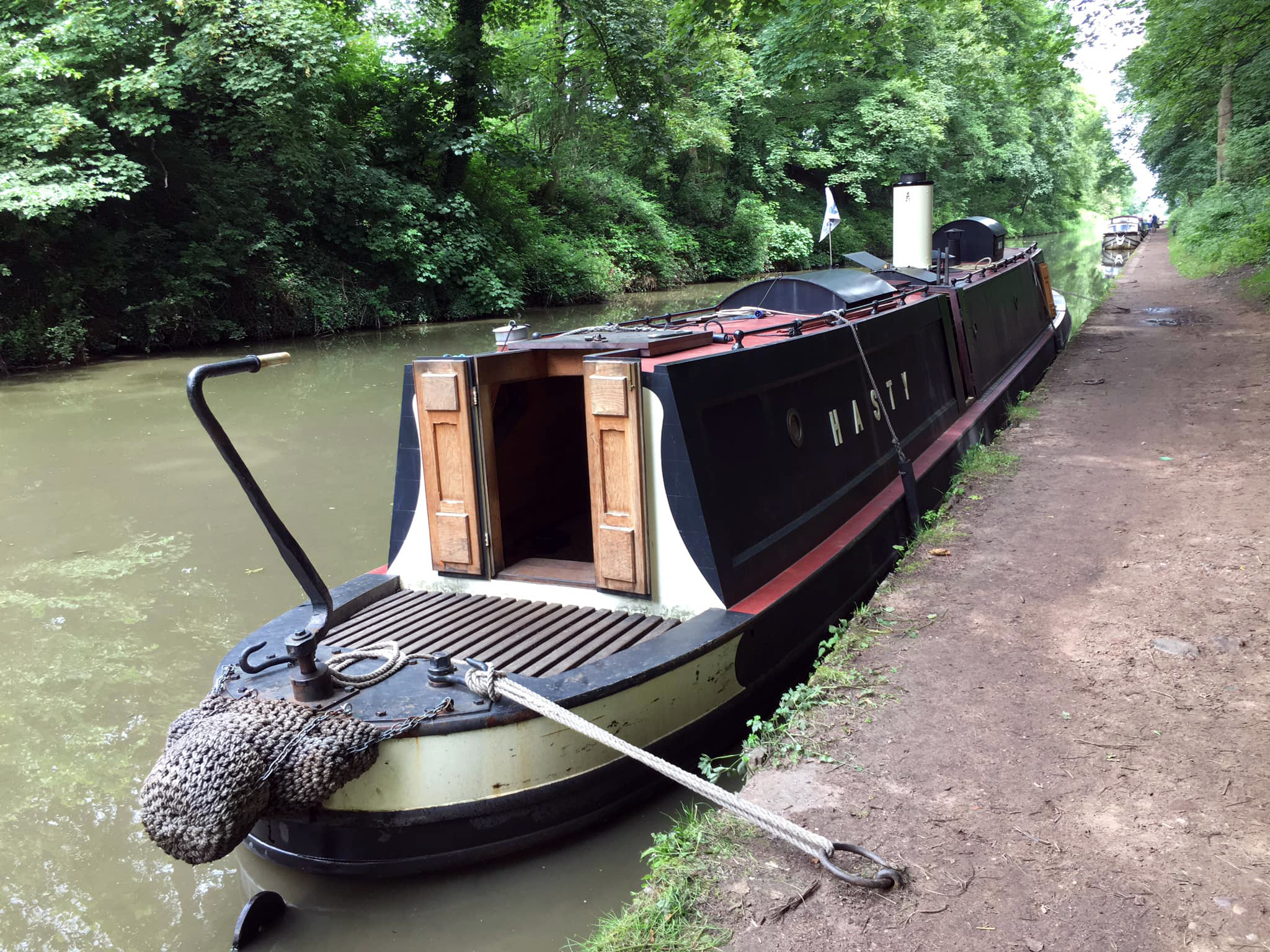
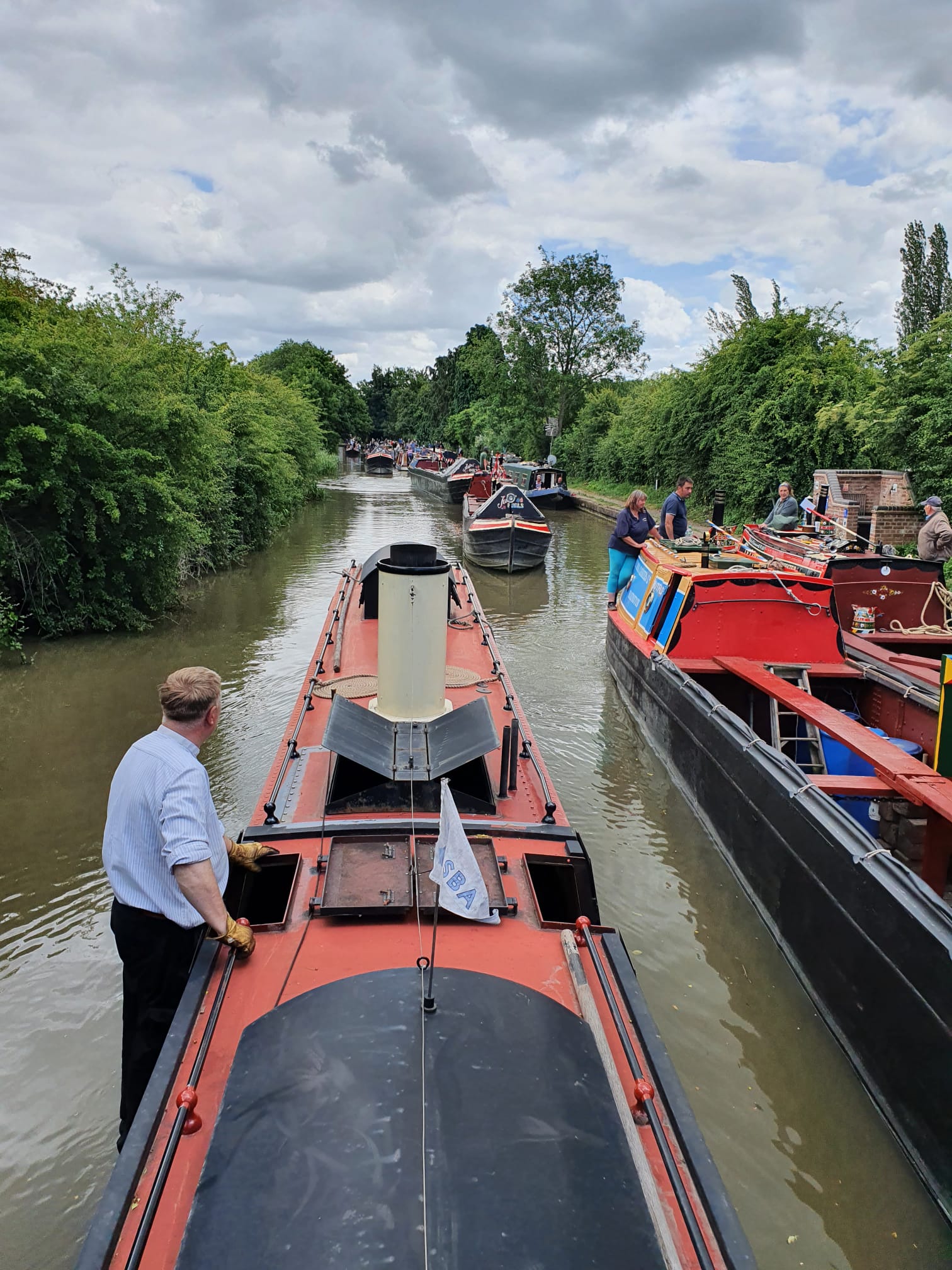
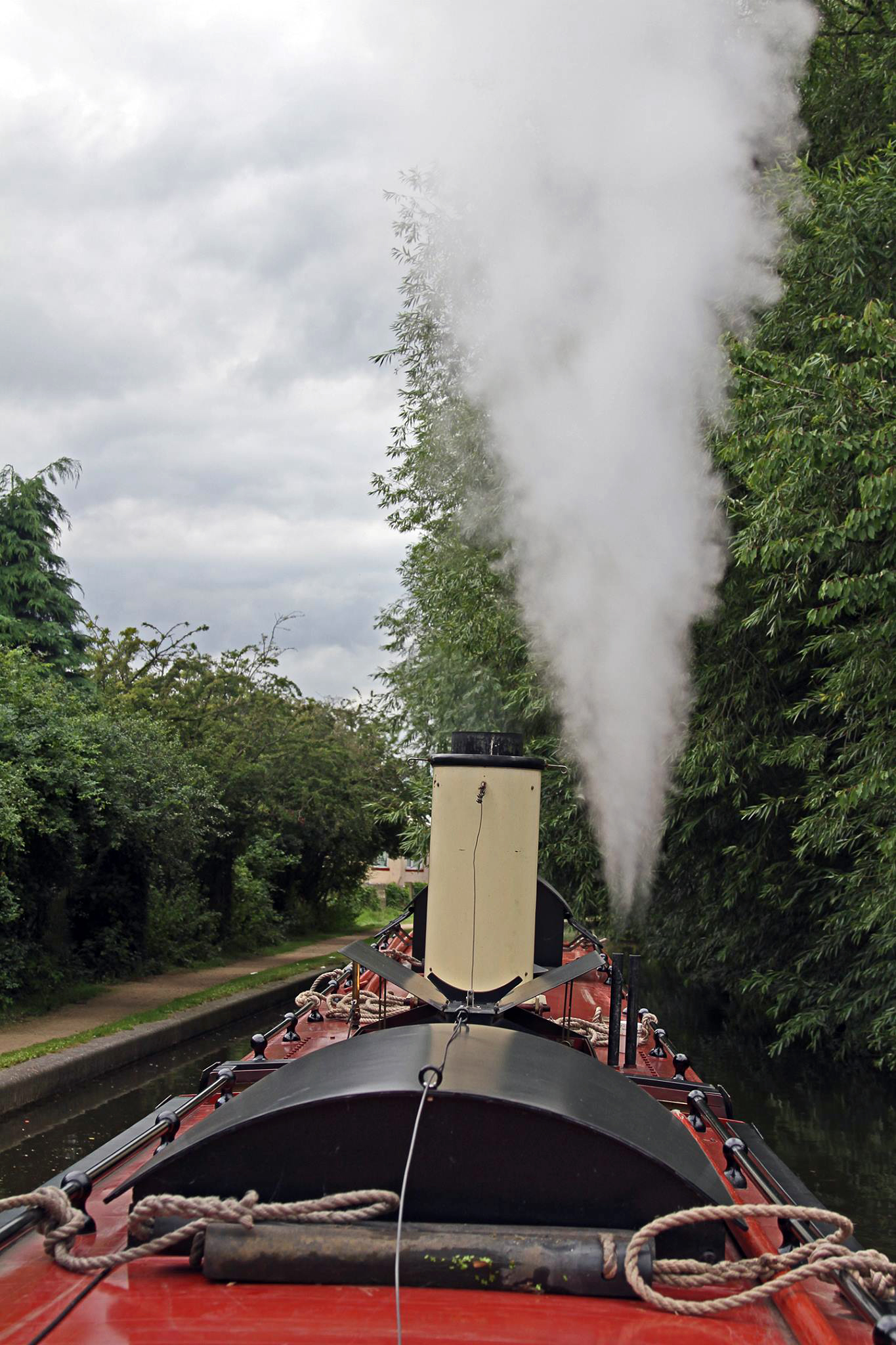
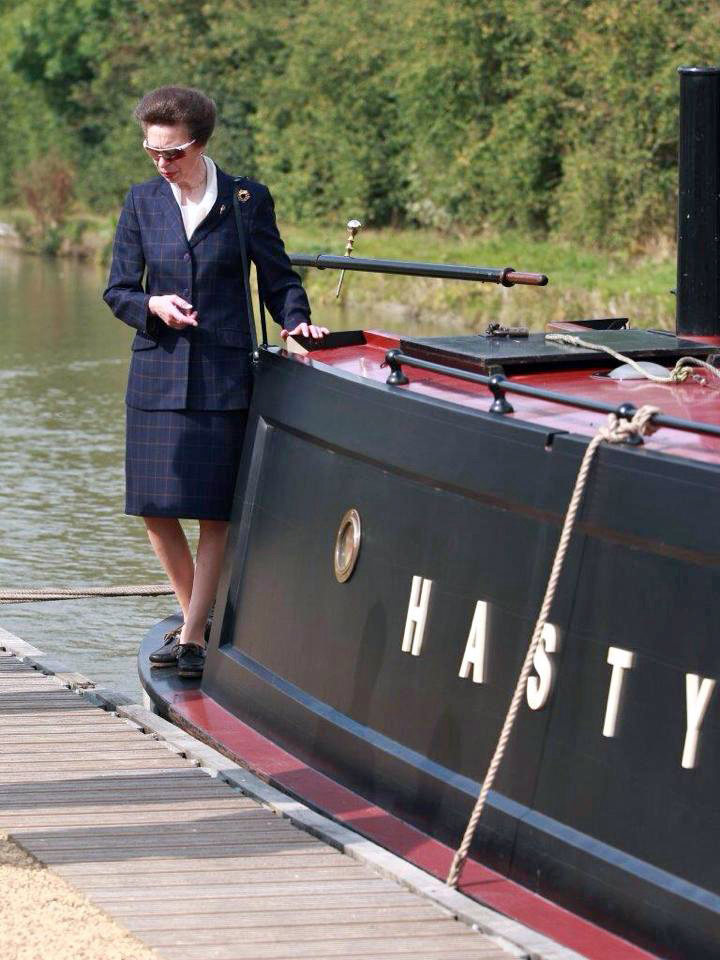
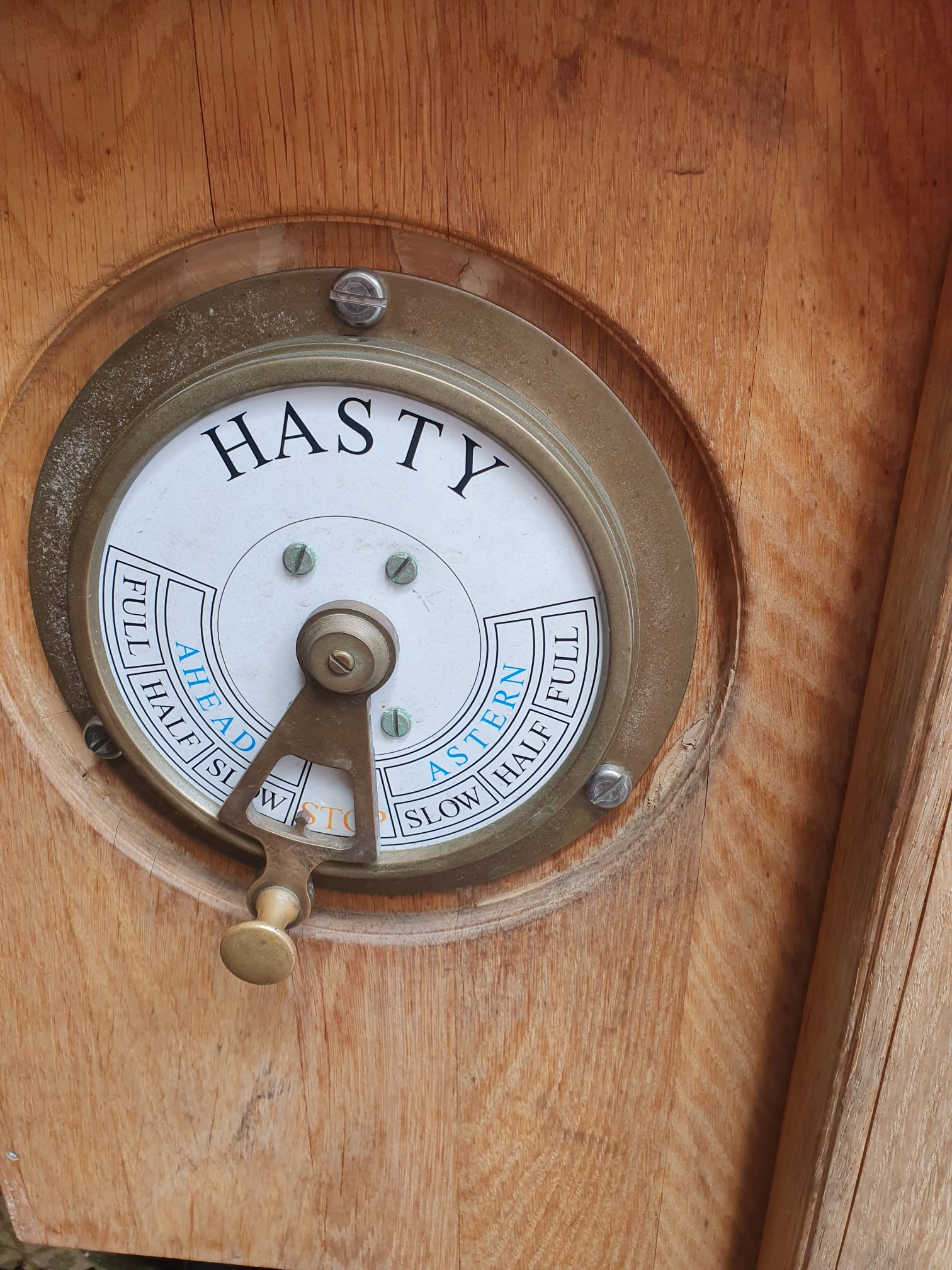
But before I detail that regrettable incident, it’s worth giving an outline of the boat. Hasty is actually a replica of the type of craft that was used to pull narrowboats through tunnels at Blisworth and Braunston. While the boat horses were walked over the top, steam-powered vessels were used to pull up to 40 boats through the long, dark passages.
“There would be just enough time for the boats to take on more fuel and get the boiler back up to white-hot temperatures before turning around and doing [the tunnel passages] all over again in the other direction,” explained Keith, Hasty’s co-owner, chief engineer and boilerman. Loaded boats would pay more for the service than empty ones and, with two boats servicing the route, they would often pass in the tunnel, heading in opposite directions.
Having been offered the opportunity to help crew the boat during the rally’s celebrated boat parade, I was stationed at the tiller with Hasty’s skipper Andy, and given a very important job. “Toot the whistle,” I was told, as Andy handed me the length of rope connected to the boat’s steam-powered whistle. “The gongoozlers love it!” So, toot I did, at every available opportunity. And the onlookers did indeed love it. It was only later I found out that I’d almost deafened Keith on several occasions by sounding the whistle while he was standing next to it. And that’s also how I managed to make the aforementioned small child cry.
To achieve maximum effect I’d tooted the whistle right when Hasty was passing under the crowded bridge outside Braunston Marina, thereby scaring the life out of the poor kid. If you’re the parents of said child, I do apologise!
The original boat was built by Bushell’s in 1870 and, having been subject to various modernisations and adaptations, it pulled boats through the tunnels until 1936 when the tug services stopped.
The idea of building a replica occurred to Keith when he acquired the engine, which he kept in his kitchen for four years. It was taken apart and reconstructed piece by piece in the shell of the boat, with the build project taking around seven years to complete. “I did consider calling the boat ‘eBay’ because I got so many of its parts from there!” joked Keith.
Hasty’s steam engine was the last to come off the production line of Gloucester company W. Sisson & Co before the factory closed its doors forever. It went over to South Africa before being brought back to the UK by Keith and marinised for use in Hasty. The engine was designed by Alan Smith, who is still alive and considers this power plant to be the best the company ever made. Indeed, Andy tells me they can power the boat for four hours using just 40kg of coal.
Something I hadn’t realised is that cruising a steam boat is a two-man job, at least. While Andy takes care of steering at the tiller, Keith is busy inside the engine room making the engine do what is needed. Andy communicates with Keith using Hasty’s superb telegraph, which tells Keith if forward or reverse is needed, and how much power is required.
Despite having so much steam power, Hasty is eerily silent when underway, with its engine creating next to no noise at all. “I don’t think I’d like cruising with a noisy diesel engine after being on the back of such a quiet boat as this,” said Andy. After our wonderful cruise around Braunston, I can see exactly what he means.
Narrowboat Elizabeth
| Date | 1860 |
| Length | 61ft 6in |
| Builder | Warren's Shipyard |
| Engine: | Gardner 2LW |
| Owner: | Martin Armitt |
I’d spotted Elizabeth early on the first day of the rally. In fact, I hadn’t just spotted it – it stuck out like a proverbial sore thumb because it was unlike any narrowboat I’d ever seen before. I was pleased, therefore, to find its owner, Martin, sat on the roof chatting with other boaters when I went past.
As you might imagine for a boat that’s 162 years old, there’s a lot of factual history we could cover here, but it’s Martin’s ownership story that really captured my attention.

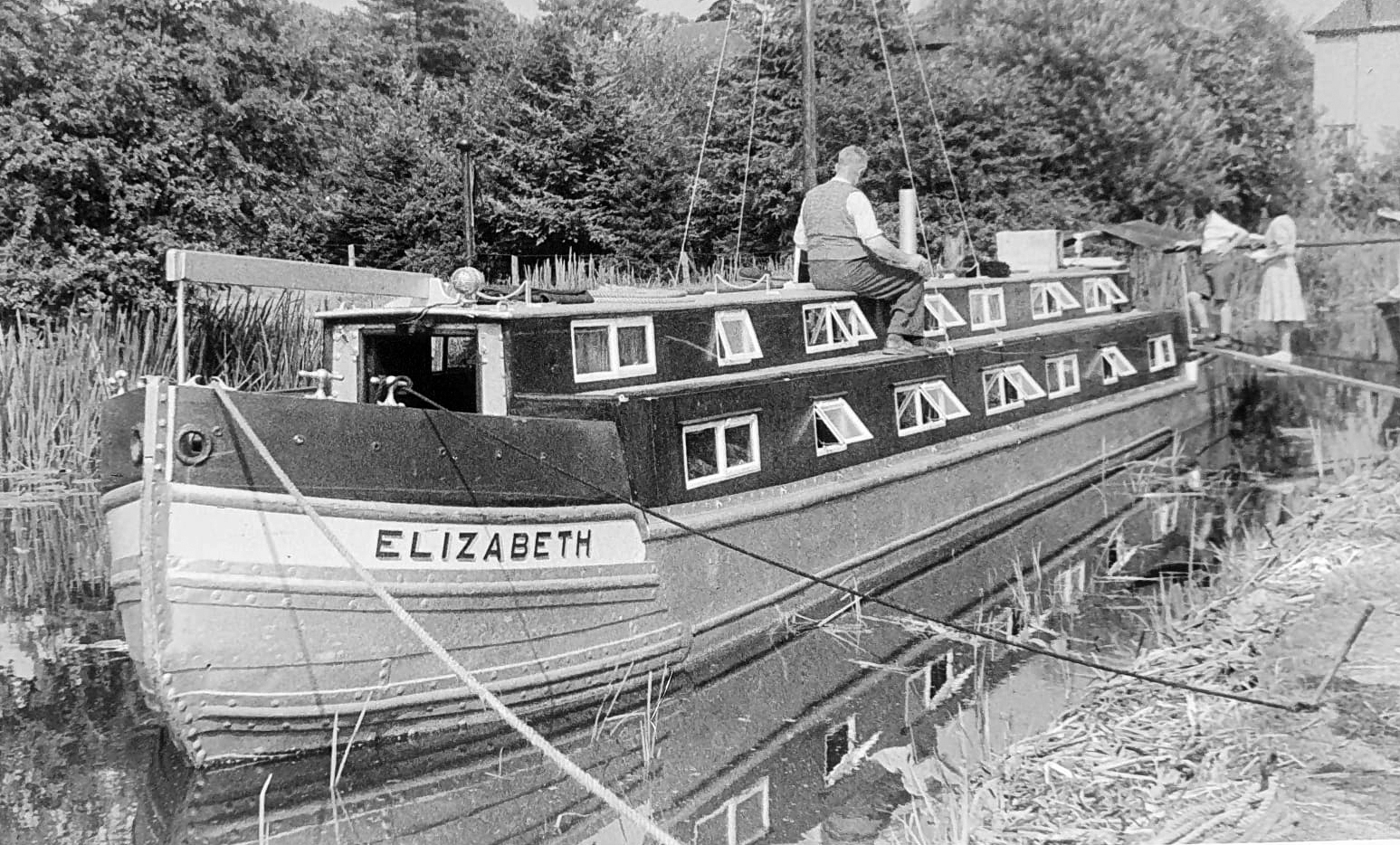

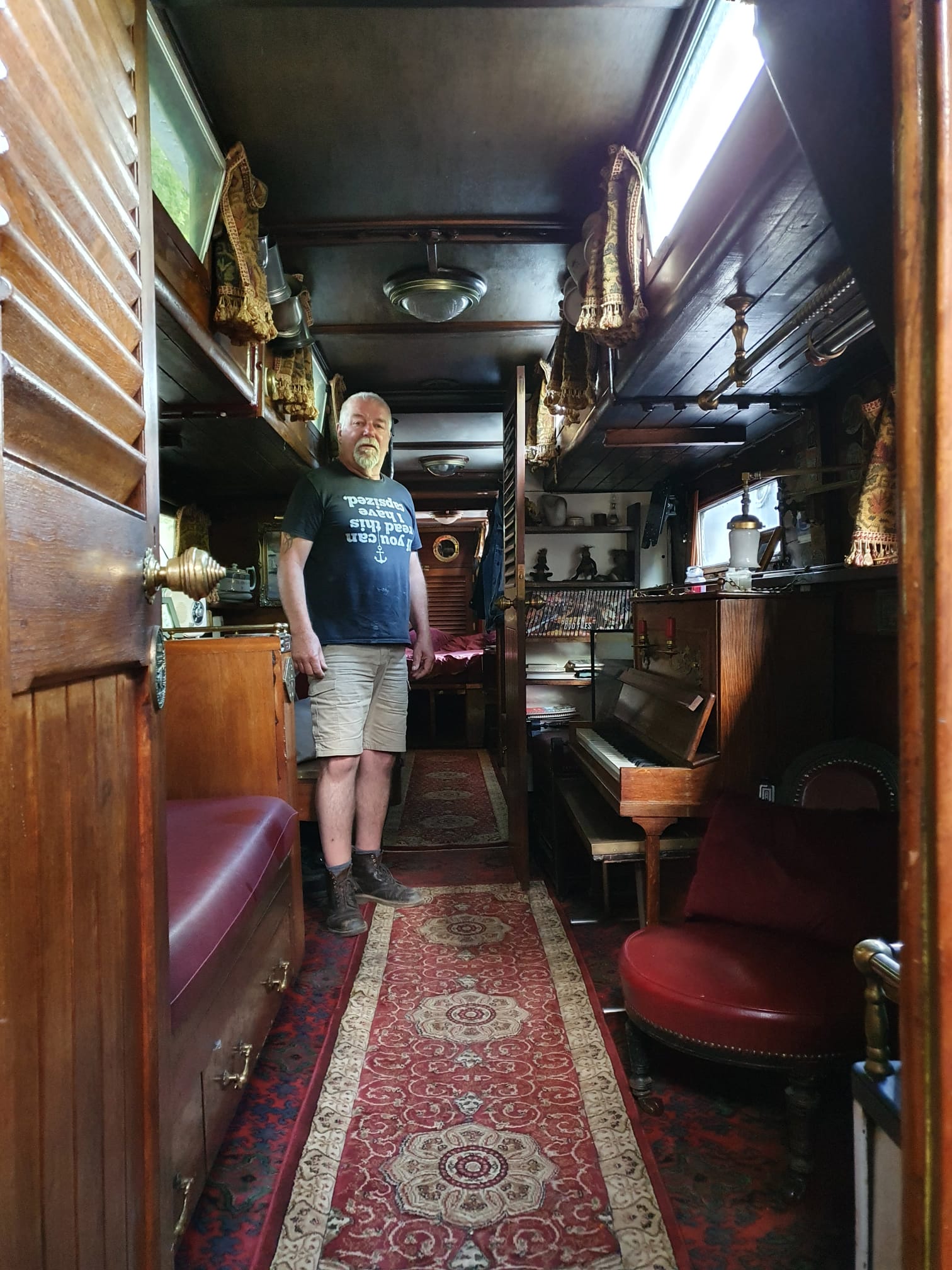
Let’s start with the facts though. Elizabeth was originally a fairly conventional horse-drawn boat before having a mast and sails fitted to enable it to work on the River Thames. In the 1930s it was fitted with a full-length cabin, becoming one of the first residential narrowboats on our waterways.
It is also unusually well- travelled for such a boat, with its previous owners having cruised every European waterway aboard her, before taking it back to the UK.
Skip forward to 2017 and plans were afoot for Elizabeth to be put on display at the National Waterways Museum at Ellesmere Port, and that’s where Martin comes in.
Martin heard about Elizabeth from Jim McDonald, one of its previous owners. He’d got wind of the boat being sent to Ellesmere Portand objected to it being brought out of active service on the waterways, reportedly stating, “My Lizzie isn’t going to end its life like that!”
Martin, who had a new- build narrowboat at the time, fell in love with it and the rest, as they say, is history.
“The inside has remained essentially untouched since it was converted to a liveaboard boat in 1936,” explained Martin. “I’ve tidied things up inside, but the only real change I’ve made is to move the location of the bath.”
The bath’s previous location was under the low section of the cabin at the bow, which rather restricted headroom. “There was a hatch you could open and stick your head through while you were sitting in the bath – much to the amusement of my neighbours!” he explained.
The interior of the boat is a sight to behold and is a real timewarp. Along with the antique brass, crockery and a whole host of other narrowboat memorabilia, there’s even an old piano which has been aboard since Elizabeth was converted. Martin’s plan is to tackle the outside of the boat next and bring that up to a similarly impressive level of restoration.
While I’m sure the museum would have cared for Elizabeth it’s quite understandable why Jim wanted someone to take it on and love it as their own. After all, I’ll bet there’s not another boat on the cut that has quite as much character.
